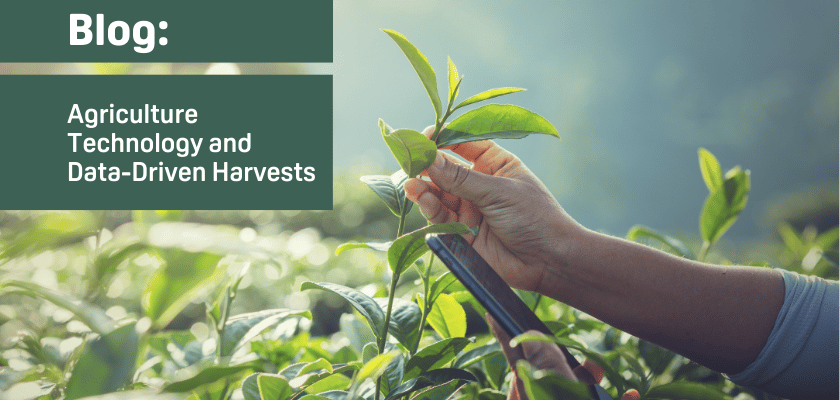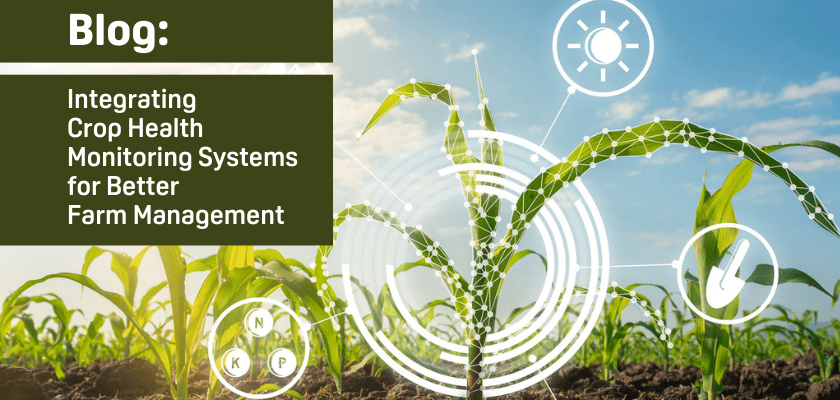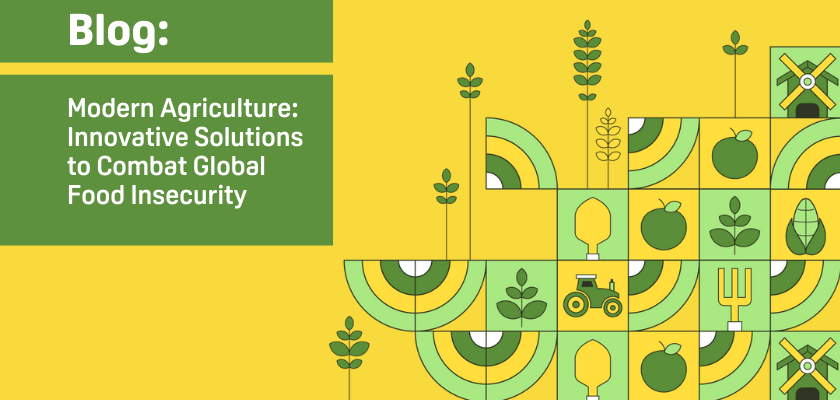

Unlocking Water Abundance: How Regenerative Agriculture Contributes to Net Zero Water
Regenerative agriculture is a holistic approach focused on restoring soil health, increasing biodiversity, and achieving net-zero water use. It employs practices like crop rotation, cover cropping, and reduced tillage. Promoted by Doktar's initiatives with major companies, it offers environmental, economic, and social benefits, including improved soil health, water conservation, and carbon sequestration.
Published on 12 June 2024
Water scarcity is a critical issue facing our world today, and agriculture is both a significant user and an area with vast potential for improvement. One approach gaining traction for its ability to address water challenges sustainably is regenerative agriculture. This practice not only aims to enhance soil health and biodiversity but also strives to achieve net zero water use. In this post, we will explore the intricacies of regenerative agriculture, its importance, and how it can lead to a future of water abundance.
What is Regenerative Agriculture?
Regenerative agriculture is a holistic farming approach that focuses on restoring and enhancing the health of agricultural ecosystems. Unlike conventional farming, which often depletes soil and water resources, regenerative practices aim to improve soil fertility, increase biodiversity, and strengthen the resilience of ecosystems. This approach includes a variety of practices such as crop rotation, cover cropping, reduced tillage, and agroforestry. Doktar, with its Climate and Sustainability Initiative (CSI) projects, promotes regenerative agriculture practices. Doktar's collaborations with major food and beverage companies, such as Coca-Cola and Cargill, demonstrate the practical applications and benefits of these methods on a large scale. Integrating advanced technologies and sustainable practices, Doktar's projects aim to enhance soil health, conserve water, and increase crop yields while reducing environmental impact.
Why is Regenerative Agriculture Important?
Regenerative agriculture is vital for addressing some of the most pressing environmental and economic challenges of our time. It offers a sustainable solution to the degradation of natural resources that conventional farming practices have exacerbated over the years. This approach ensures the long-term viability of farming by preserving the natural resource base and plays a critical role in combating climate change through carbon sequestration. Moreover, regenerative agriculture enhances the resilience of farming systems against extreme weather events, which are becoming more frequent and severe due to climate change. By fostering healthier ecosystems, it supports the livelihoods of farmers and rural communities, contributing to food security and economic stability.
Regenerative agriculture is crucial for several reasons:
- Soil Health Improvement: Healthy soil is fundamental for sustainable agriculture. Regenerative practices enhance soil structure, increase organic matter, and improve water infiltration and retention. This results in more resilient crops and reduces the need for synthetic fertilizers and pesticides.
- Biodiversity Enhancement: By promoting a diverse range of plant and animal life, regenerative agriculture supports ecosystem health. Biodiversity helps control pests, pollinate crops, and maintain soil fertility.
- Carbon Sequestration: Regenerative practices can capture and store soil carbon, helping mitigate climate change. Healthy soils act as carbon sinks, reducing greenhouse gas concentrations in the atmosphere.
- Water Conservation: Improved soil health leads to better water retention and reduced erosion. This conserves water and ensures that more water is available for crops during dry periods.
How Does Regenerative Agriculture Work?
Regenerative agriculture employs various practices to achieve its goals. Here are some key methods:
1. Crop Rotation and Diversification: By rotating crops and diversifying plant species, farmers can prevent soil depletion and reduce pest outbreaks. Different crops have varying nutrient needs and contribute differently to soil health, helping maintain balanced soil conditions.
2. Cover Cropping: Planting cover crops such as legumes and grasses during the off-seasons protects the soil from erosion, improves soil structure, and adds organic matter. Cover crops also help manage weeds and pests naturally.
3. Reduced Tillage: Minimizing soil disturbance through reduced or no-till farming helps preserve soil structure, enhances water infiltration, and reduces erosion. This practice maintains the soil's organic content and supports microbial activity.
4. Agroforestry: Integrating trees and shrubs into farmland enhances biodiversity, improves soil health, and provides additional income sources. Trees act as windbreaks, reduce soil erosion, and enhance water retention.
Benefits of Regenerative Agriculture
Regenerative agriculture offers a multitude of benefits that extend beyond the immediate farming environment, impacting the economy, society, and the broader ecosystem. Here are some of the key benefits:
Environmental Benefits
- Soil Health Improvement: Soil health is the cornerstone of regenerative agriculture. Healthy soils support plant growth, water retention, and carbon sequestration. They are more resilient to extreme weather events, reducing the risk of crop failure during droughts or floods. By focusing on soil health, regenerative agriculture helps create a sustainable and productive agricultural system. Regenerative practices enhance soil structure and increase organic matter content, leading to healthier, more productive soils. Improved soil health boosts water retention, reduces erosion, and enhances crop nutrient availability.
- Biodiversity Enhancement: Promoting a diverse range of plant and animal species, regenerative agriculture fosters a more resilient ecosystem. This biodiversity supports natural pest control, pollination, and soil fertility, reducing the need for chemical inputs.
- Water Conservation: Improved soil health through practices such as cover cropping and reduced tillage enhances the soil’s ability to retain water, reducing runoff and erosion. This leads to more efficient water use and greater resilience during droughts.
- Carbon Sequestration: Regenerative practices , such as agroforestry and cover cropping, capture and store atmospheric carbon in the soil, helping to mitigate climate change. Healthy soils act as carbon sinks, reducing greenhouse gas levels in the atmosphere.
- Reduced Chemical Inputs: By improving soil health and biodiversity, regenerative agriculture reduces the need for synthetic fertilizers and pesticides. This minimizes the environmental impact of chemical runoff and enhances the ecosystem's overall health.
Economic Benefits
- Cost Savings: Regenerative practices can lower input costs by reducing the need for synthetic fertilizers, pesticides, and irrigation. Healthier soils and ecosystems can lead to more resilient crops, reducing the need for costly interventions.
- Increased Yields and Profitability: Over time, improved soil health and biodiversity can lead to increased crop yields and higher farmer profitability. Healthier crops are more resilient to pests and diseases, resulting in more stable and productive farming operations.
- Market Opportunities: There is a growing consumer demand for sustainably produced food. Farmers who adopt regenerative practices can capitalize on this trend, potentially gaining access to premium markets and higher product prices.
Social Benefits
- Enhanced Food Security: Regenerative agriculture aids in maintaining a stable food supply by establishing resilient farming systems. Healthier soils and diverse ecosystems facilitate consistent crop production, even when facing climatic challenges.
- Community Well-being: Healthier farming ecosystems can support stronger rural communities by creating jobs and enhancing local economies. Regenerative agriculture promotes sustainable livelihoods and fosters a deeper connection between farmers and their land.
- Educational Opportunities: Adopting regenerative practices often involves knowledge sharing and education. This can lead to increased agricultural literacy and empowerment of farmers, enabling them to make informed decisions and improve their farming practices.
Health Benefits
- Nutrient-rich Food: Healthier soils produce more nutrient-dense crops, which can contribute to better human health. Regenerative agriculture practices can enhance the nutritional quality of food by ensuring that plants have access to a full range of nutrients.
- Reduced Exposure to Chemicals: By minimizing the use of synthetic fertilizers and pesticides, regenerative agriculture reduces exposure of farmers, consumers, and the environment to harmful chemicals. This can lead to improved health outcomes and a safer food supply.
What Are the Roles of Doktar in Regenerative Agriculture?
Doktar plays a pivotal role in advancing regenerative agriculture through its innovative projects, services, and tools that promote sustainable farming practices. By collaborating with major companies like Coca-Cola and Cargill, Doktar has implemented large-scale initiatives aimed at enhancing soil health, conserving water, and increasing crop yields. These projects leverage Doktar's advanced technologies, such as the Filiz Agricultural Sensor Station, which monitors real-time soil and weather conditions, and the PestTrap, which uses AI to detect and manage pest populations. Additionally, Doktar's Orbit app provides farmers with satellite-based crop monitoring and variable rate application (VRA) tools to optimize input use and maximize productivity. Through its Climate and Sustainability Initiatives (CSI), Doktar supports farmers in adopting regenerative practices by offering comprehensive training, remote and onsite agronomy support, and digital tools that enhance decision-making.
Conclusion
Regenerative agriculture represents a promising path toward achieving net-zero water use and creating a sustainable agricultural future. By enhancing soil health, conserving water, and promoting biodiversity, these practices can lead to more resilient farming systems and water abundance. As the world faces increasing water scarcity, adopting regenerative agriculture is not just a choice but a necessity for ensuring food security and environmental sustainability. Discover how regenerative agriculture can transform water use and contribute to a greener future. Join the movement towards sustainable farming practices and help unlock water abundance for future generations.
For those interested in exploring how Doktar's innovative solutions can transform your agricultural practices, visit our website for detailed information on all our products. Stay updated with the latest developments by following us on Instagram and LinkedIn, where we share insights, tips, and updates about our technologies and their impact on modern farming. Our mission is to ensure every agronomic decision is based on accurate information and optimization for a healthier, sustainable, and tastier world. Join us in transforming agriculture and achieving a more sustainable future.

Agriculture Technology and Data-Driven Harvests
The convergence of agriculture technology and data-driven solutions represents the next frontier of innovation in farming. With companies like Doktar leading the way, farmers can leverage these advancements to improve productivity, reduce environmental impact, and secure a more sustainable future for agriculture. Whether through precision agriculture, sustainable agriculture, or cutting-edge smart agriculture technology, the future of farming is bright, and data is at the heart of this transformation. Technology's positive impact on this future should inspire and motivate us all.

Integrating Crop Health Monitoring Systems for Better Farm Management
Crop health monitoring systems revolutionize modern agriculture by enabling real-time insights into plant health, reducing losses, and promoting sustainability. Tools like Doktar’s CropMap and Orbit integrate advanced technologies, empowering farmers with data-driven decisions. By enhancing efficiency and sustainability, these systems are essential for future-proofing agricultural operations.

Modern Agriculture: Innovative Solutions to Combat Global Food Insecurity
Modern agriculture combats global food insecurity with precision agriculture, sustainable practices, and biotechnology. Tools like IoT, automation, and crop innovations optimize resource use, enhance resilience, and ensure stable food supplies. By integrating smart technologies, agribusinesses address challenges like climate change and resource scarcity, paving the way for a sustainable food future.
